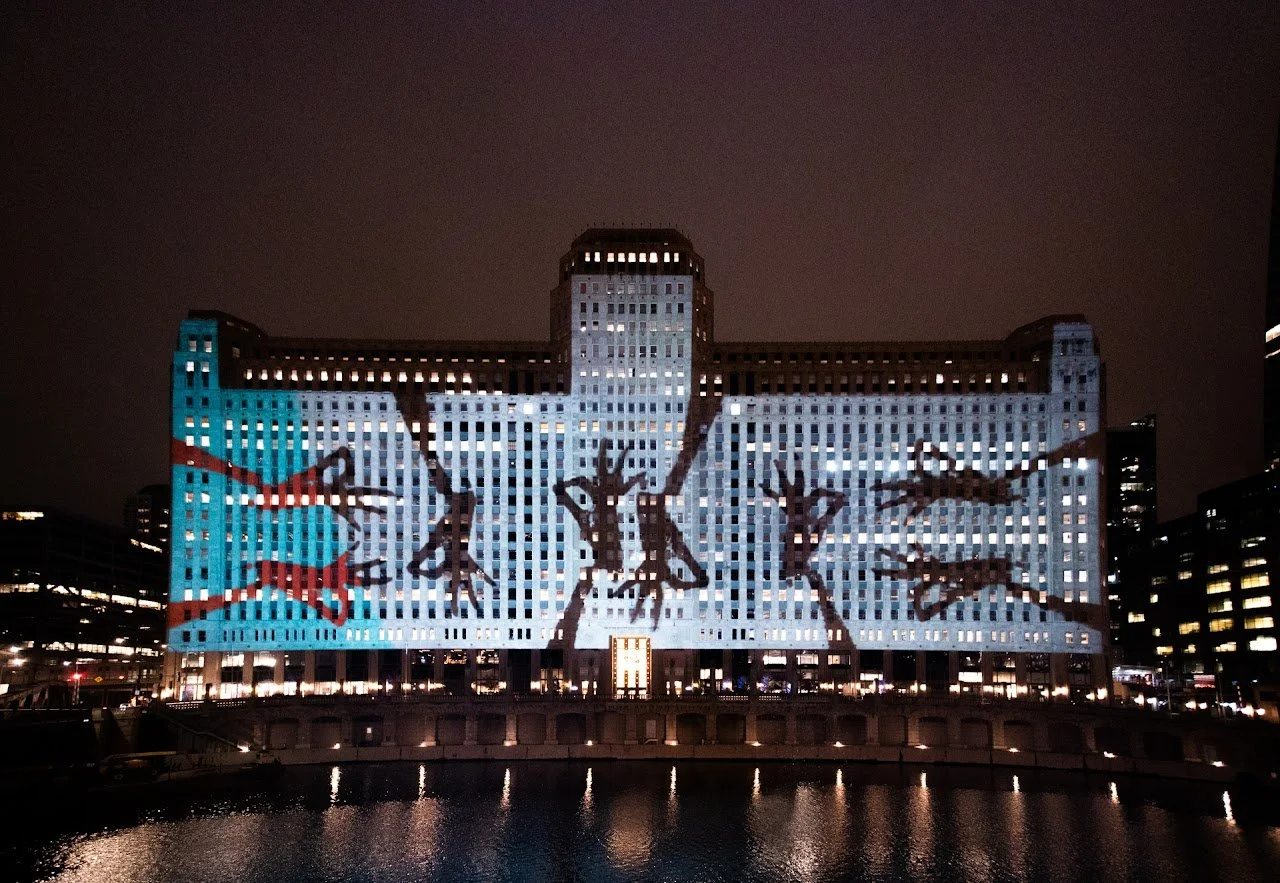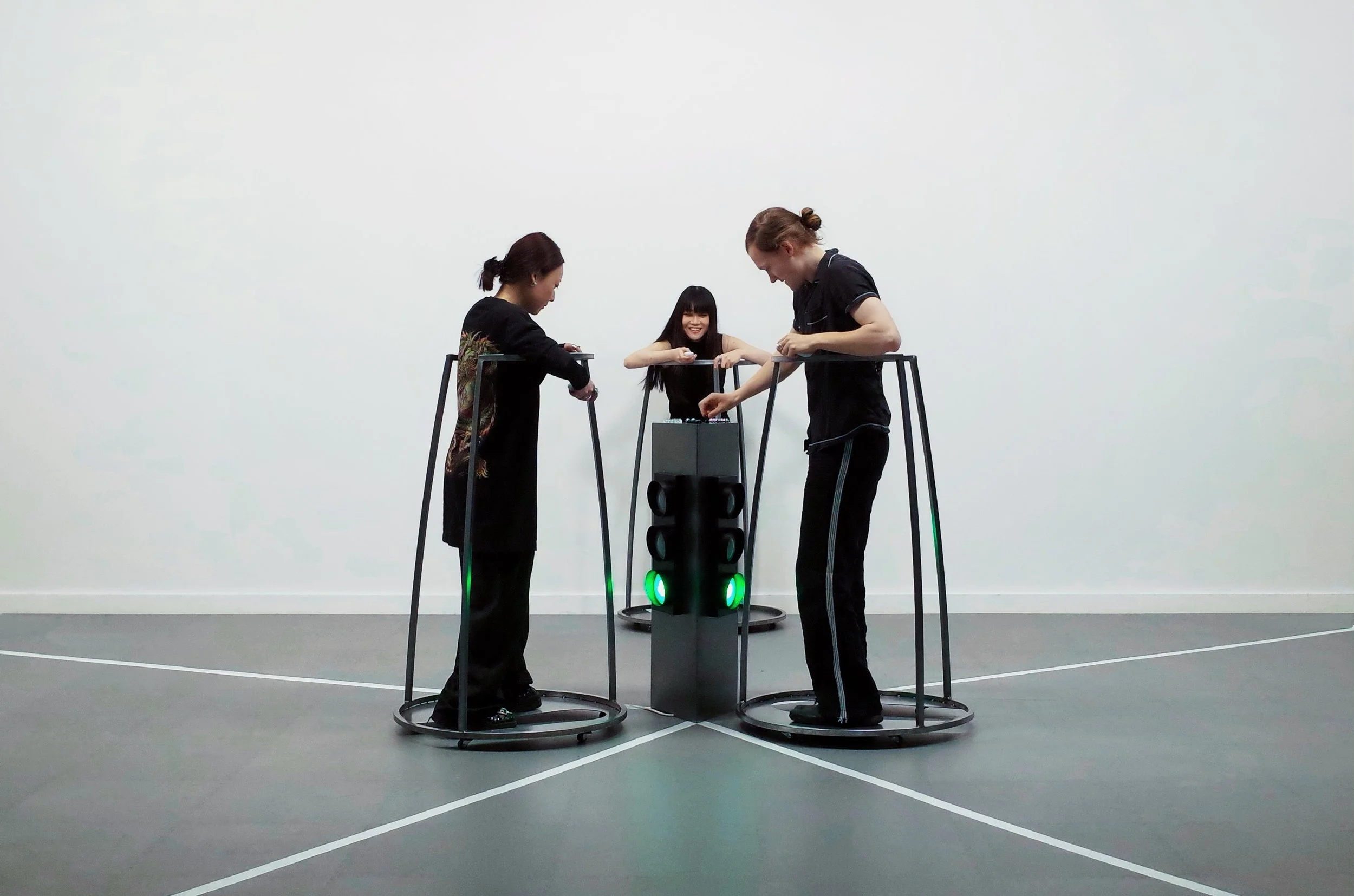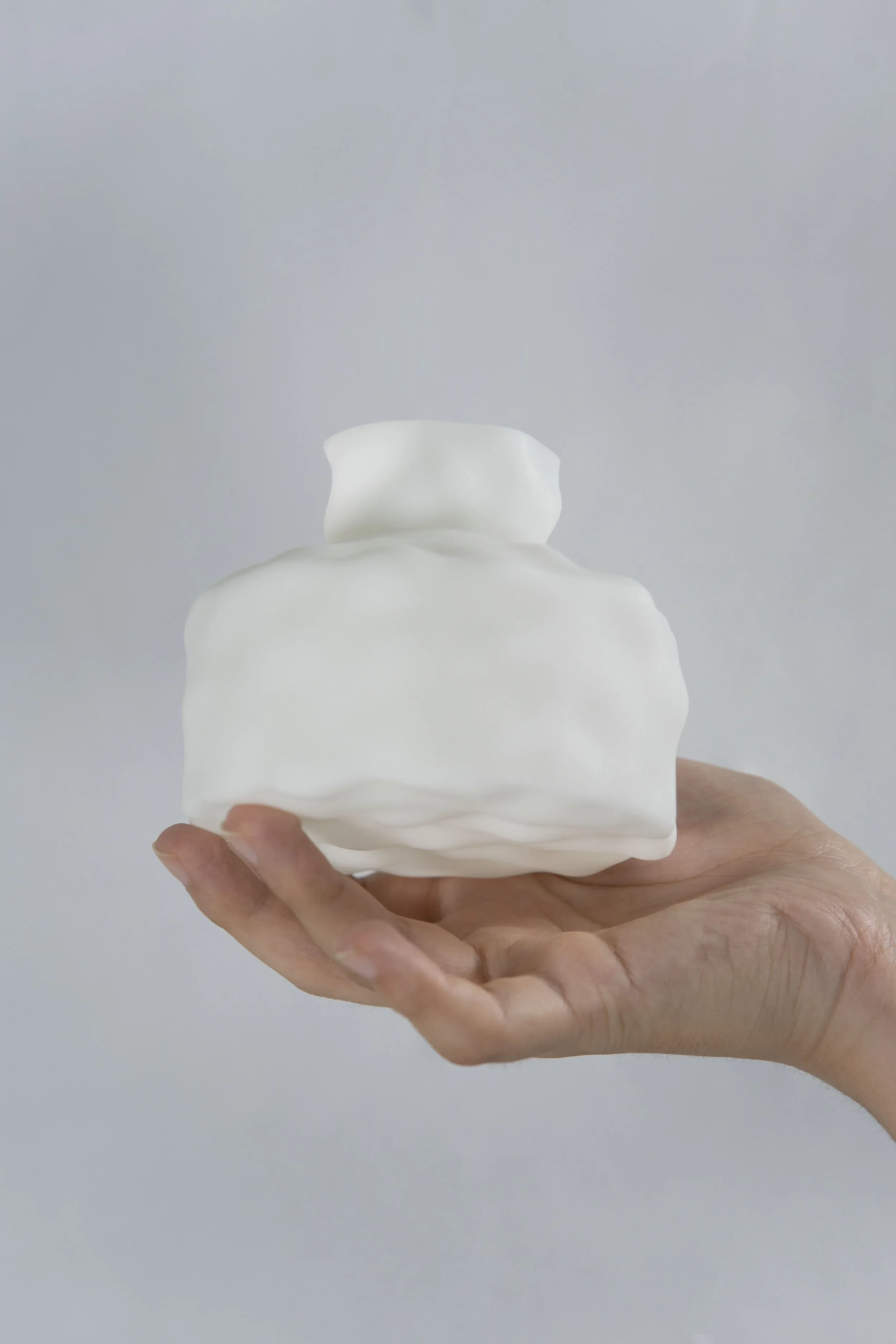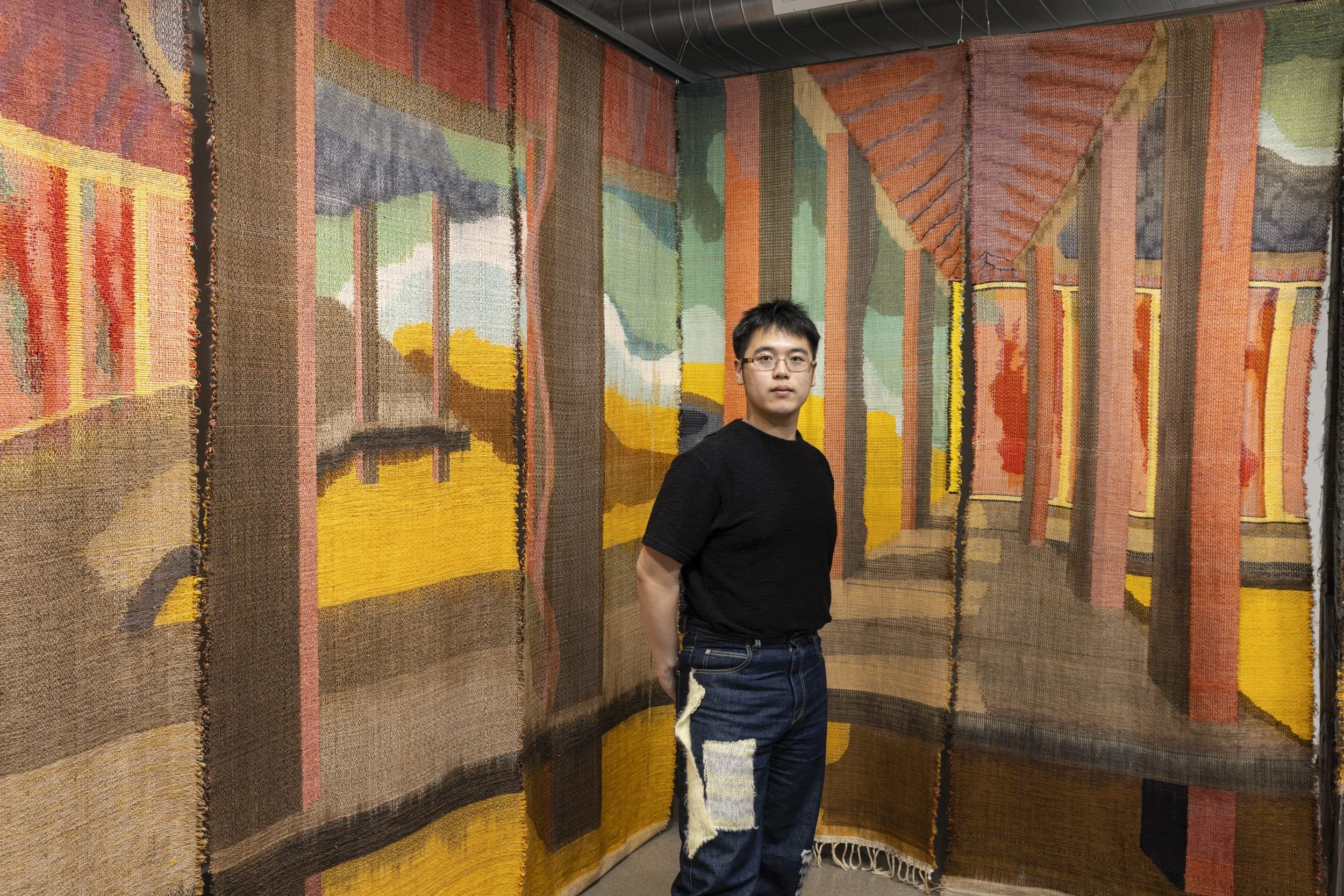10 Questions with Rose Ansari
Rose Ansari is an Iranian multidisciplinary artist, creative technologist, and computational media researcher. She holds a Bachelor of Fine Arts from Alzahra University of Tehran and a Master of Fine Arts in Art & Technology / Sound Practices from the School of the Art Institute of Chicago. During the 2024–2025 academic year, she served as an affiliated researcher and fellow at the University of Chicago. Currently, she is pursuing her PhD in Computational Media, Arts & Cultures at Duke University.
Rose's research-based art practice explores cyborg and post-human theories, sensory distortion, and telecommunication through laboratory-driven processes. Drawing inspiration from science fiction, futuristic concepts, biology, and machines, she creates immersive environments that blend technology, cognitive science, and poetic expression to investigate the complexities of human perception, identity, and emotion. Her projects and research have been exhibited and presented nationally and internationally.
Rose Ansari - Portrait
ARTIST STATEMENT
“Through my research-based practice, I utilize technology to explore its relationship with the human body within the global socio-political landscape. I explore prosthetics as a means for trauma processing (stemming from my personal experiences as an immigrant Iranian woman in America), navigating through gender discrimination, displacement, violence, and oppression. Inspired by Kruger's work 'Your body is a battleground,' I address phenomenological issues related to human brain function, optics, experience, and perception.
I incorporate post-humanist themes such as exploring Transhumanism and Augmentation, questioning Anthropocentrism, engaging with Artificial Intelligence, speculating on Post-biological Futures, and Critiquing Dualistic Notions of Self and others into my work to invite audiences to contemplate the complex intersections of humanity, technology, and the natural world.
My art confronts trauma through immersive environments that employ 'reenactments' to manifest ideas and experiences. I construct systems both inside and around the body, exploring the relationship between humans and non-humans through a variety of strategies. I view human-computer interaction as a catalyst for human-human communication.
I use irony, humour, surrealism, or paradoxical imagery to convey the absurdity of the human condition and Existentialism. My artistic process begins with logic but harnesses intuition, resulting in laboratory experiments that explore sequences and consequences of sensory experiences. I use distortion, confusion, and sensory telecommunication as strategies for challenging, stimulating, and fostering deeper engagement with my work.
Inspired by fantasy and flux, I create light installations such as Total Art in dark rooms and utilize audio as a non-physical tool to delve into the audience's subconscious. Sculpting the frequency of sound, I evoke high and low-pitched auditory experiences, inviting viewers to explore the core meaning of life through minimal visual language inspired by scientific theories.
Fueled by a fascination with surrealism and immersive environments drawn from sci-fi and futuristic concepts, I integrated technology, cognitive sciences, and poetry to untangle the human unconscious. In essence, I position myself at the blurred intersection of art and science, object and space, and physical and nonphysical phenomena.”
— Rose Ansari
Rusted Symphony, kinetic sound installation, 4x5 feet, 2025 © Rose Ansari
INTERVIEW
First of all, introduce yourself to our readers. Who are you and how did you develop into the artist you are today?
My name is Rose Ansari, and I am an Iranian multidisciplinary artist and creative technologist currently based in the United States. My artistic practice evolved through integration of my diverse educational and personal background, initially rooted in mathematics and visual arts, then expanding deeply into the intersection of technology, science, and humanities. My early studies at Alzahra University of Tehran provided a solid foundation in traditional fine arts, while my current MFA at the School of the Art Institute of Chicago has allowed me to delve deeper into Art & Technology and Sound Practices. My identity as an immigrant greatly informs my practice, driving me to explore themes of identity, displacement, trauma, and interconnectedness within global landscapes.
You first studied at the Alzahra University of Tehran, and you are currently enrolled in the Master of Fine Arts program at the School of the Art Institute of Chicago, with a focus on Art & Technology Studies. Can you share with us how your background has influenced your artistic journey?
My foundational studies in painting and studio art at Alzahra University grounded me in classical artistic principles and allowed me to explore visual storytelling as a means of cultural expression. Moving to the United States amplified my awareness of cultural and social issues, profoundly influencing my current artistic direction. The transition to studying Art & Technology at SAIC provided the technical skills and conceptual frameworks necessary to articulate complex narratives of identity, trauma, and empowerment through innovative media, ranging from kinetic installations to immersive VR experiences.
Synestral, Audiovisual Interactive Light Installation. Lumia Art, 4x3x5 feet, 2023 © Rose Ansari
In your work, you engage with different mediums such as design, video poetry, and surveillance. What are some of the challenges and rewards you've encountered while working across such different mediums?
Navigating across diverse mediums like design, video poetry, surveillance, and interactive installations has presented bothtechnical and conceptual challenges. Technically, each medium requires mastering distinct skills, coding, digital fabrication, sound engineering, which demands continual adaptation. Conceptually, translating nuanced ideas coherently across multiple formats is intricate yet deeply rewarding. The primary reward lies in the ability to reach diverse audiences, making the themes I explore more accessible and impactful, and offering multiple entry points for engaging deeply with complex ideas around identity, technology, and humanity.
Your recent works draw inspiration from architectural space, material science, and body movements, as you mention in your biography. Could you discuss how these diverse influences converge in your artwork?
Architectural space, material science, and body movements intersect profoundly in my installations, such as "Architectural Atmosphere," "HOLD-ME-TIGHT," and "Fractuluminal." In these works, architecture frames the experiential boundaries, material science informs tactile and sensory experiences, and body movements activate interactions between humans and technology. This convergence is intentional, facilitating immersive environments where physical and emotional experiences merge, challenging conventional perceptions of space, form, and human interaction, and compelling viewers to reexamine their relationship to the built environment and technology.
Ethervale, Neon installation art, 1x2 feet, 2024 © Rose Ansari
Aesthusion, Robotic wearable Art, 50×50 in, 2023 © Rose Ansari
Your artist statement mentions exploring themes of identity and interconnectedness. How do these themes manifest in your interdisciplinary practice?
Themes of identity and interconnectedness permeate my interdisciplinary practice through projects like "The Distance Within," "Spot," and "Humachinex." Each work embodies personal and collective narratives of displacement, belonging, and adaptation, manifested through immersive sensory experiences. For instance, "The Distance Within" juxtaposes the tactile sensation of water with virtual desert landscapes, reflecting my own immigrant experiences and emotional duality. Similarly, "Spot" visualizes diaspora and identity through data-driven bio-maps and ambient sensory interactions, emphasizing interconnectedness beyond geographical boundaries.
You mention employing code in your work to unravel existence in a post-human era. Could you elaborate on how technology and code play a role in your artistic process?
Technology and code are foundational in my practice, enabling me to translate abstract theories—such as cyborgism and post-humanism, into tangible, interactive experiences. Works like "Megaminx Variants" and "Infinite Resonance"exemplify how algorithmic coding generates real-time visualizations and interactive feedback loops. Coding thus becomes not only a method of production but also a conceptual tool to critically examine human existence, autonomy, and identity within rapidly evolving technological ecosystems.
How do you see technology shaping the future of artistic expression?
Technology is increasingly becoming a vital extension of artistic expression, broadening the potential for immersive, interactive, and transformative experiences. As technology advances, it facilitates deeper audience engagement and democratizes access to artistic experiences globally. Furthermore, emerging technologies such as AI, VR, and AR enable artists to transcend physical limitations, creating expansive, hybrid realities that redefine traditional narratives and push the boundaries of sensory and perceptual experiences.
Spot, Screen-based installation, Bio Map Data Visualization, 2x3 feet, 2023 © Rose Ansari
Resonance of Transit, Motion-Capture Real-time Video Projection Art on the Mart building In collaboration with Ravinda D Wibowo (Sound), 2025 © Rose Ansari
Speaking of technology, what do you think of the recent surge of AI and AI-generated content? Do you see it as a threat to your work as an artist or as an opportunity?
I view the rise of AI and AI-generated content as a substantial opportunity rather than a threat. AI offers innovative tools for expanding creative possibilities and facilitating new forms of expression and interaction previously unimaginable. My project, "Aesthusion," which integrates AI-driven brainwave analysis, illustrates this potential. While AI presents ethical challenges regarding authorship and authenticity, these issues also become fertile ground for critical artistic exploration, prompting valuable discussions on technology's role in shaping human creativity and culture.
Looking ahead, what future projects or themes are you currently exploring, and how do you envision technology continuing to influence your artistic practice?
My future projects continue to explore the interplay between technology, identity, and the senses, focusing increasingly on augmented reality, AI ethics, and telecommunication technologies. Projects like "Aesthusion" are ongoing explorations into neuroscience and sensory augmentation. Looking forward, I envision a deeper collaboration with scientific research institutions, particularly around cognitive perception and emotional intelligence, leveraging technology to foster more meaningful connections between individuals and societies.
And lastly, what are you working on now? Do you have any new projects or series you would like to share with our readers?
Currently, I am expanding on "HOLD-ME-TIGHT," a robotic installation examining human touch starvation and emotional intimacy through human-robot interactions. Another project in progress is "Infinite Resonance," exploring quantum physics through robotic drawing systems informed by String Theory. Both projects epitomize my interdisciplinary approach, employing advanced technologies to invite audiences into reflective, sensory-rich experiences that challenge traditional views on human interaction, technology, and the fundamental nature of reality.
Artist’s Talk
Al-Tiba9 Interviews is a curated promotional platform that offers artists the opportunity to articulate their vision and engage with our diverse international readership through insightful, published dialogues. Conducted by Mohamed Benhadj, founder and curator of Al-Tiba9, these interviews spotlight the artists’ creative journeys and introduce their work to the global contemporary art scene.
Through our extensive network of museums, galleries, art professionals, collectors, and art enthusiasts worldwide, Al-Tiba9 Interviews provides a meaningful stage for artists to expand their reach and strengthen their presence in the international art discourse.






















